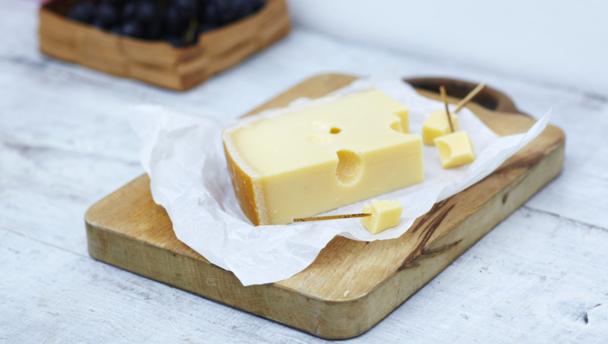

The archetypal Swiss cheese is traditionally made from unpasteurised cows’ milk in both Switzerland and across the border in France. Well-known for the marble-sized holes that dot its pale-yellow interior, it has a mildly nutty, sweet flavour and a firm, silky texture. The large, wheel-shaped cheeses are matured in cellars for an average of 4-6 months, although they can be aged for much longer to give a fuller, richer flavour.
 Swedish-style mini-meatballs
Swedish-style mini-meatballs
 Cauliflower cheese with salmon
Cauliflower cheese with salmon
 Savoury pancakes with ham and cheese
Savoury pancakes with ham and cheese
Traditional Swiss Emmentals will have the word ‘Switzerland’ stamped in red across the edge of the rind. These, and the Emmentals produced in the Savoy region of France, which are very similar, tend to be the finest examples, and are thus the best choices for a cheeseboard. If you prefer a stronger flavour, look for the word ‘reservé’ on the label; this indicates an older cheese.
As well as being served on cheeseboards, Emmental is often grated onto gratins, or melted with white wine to make a classic Alpine fondue. Premium Emmentals are best kept for the cheeseboard; other Emmentals work well in cooked dishes.
Article by Felicity Cloake
Type the ingredients you want to use, then click Go. For better results you can use quotation marks around phrases (e.g. "chicken breast"). Alternatively you can search by chef, programme, cuisine, diet, or dish (e.g. Lasagne).